One of the most common machines found on farms around the country is a conventional or plain disc mower. It is often regarded as one of the simpler farm machines, but it is far from it.
To get power from the tractor’s PTO to the blades of the mower bed, a complex drive system is required. This begins with a PTO which may have an overrun clutch and possibly a slip clutch fitted as well.
Next is a belt drive system which transfers the drive to a primary gearbox. This primary gearbox transmits drive to the mower bed and delivers rotational speed out to the discs. A hydraulic ram raises and lowers the mower while a spring system of some sort reduces bed pressure on the ground for mowing.
All in all, there’s a lot going on in any disc mower, no matter how simple it is. A little bit of maintenance and care goes a long way towards providing a trouble-free working life and a clean cut.
The first thing to do is locate the operator’s manual. This will provide key maintenance advice to keep the mower running well. If it has been lost, it is often possible to download one from the manufacturer’s website.
Here we look at an example of a plain disc mower, a Pöttinger Novadisc 305 (approximately 3m/10ft). The operator’s manual could not be found so I had to download it from the Pöttinger website.
Picture one
The PTO shaft is a good place to start. All guarding and check chains need to be in place before mowing. That’s not just from a safety perspective – it’s also from a practical perspective. Running close to the ground in long or mown grass with an exposed PTO shaft can result in a covering of grass around the shaft that will create havoc with hydraulic hoses and electrical connections.

Picture two
The crosses on both ends need to be greased daily when mowing – not just the easy-to-reach tractor end. Pöttinger recommends greasing every eight hours.

Picture three
The sliding profiles of the PTO shaft also require greasing daily (again, Pöttinger recommends greasing every eight hours). Separate the PTO halves and liberally apply grease to the sliding sections of the PTO profiles. Running with no grease can do a lot of damage, not just to the shaft but to the tractor and mower as well.

Picture four
Like any knife, blunt or damaged blades are not as effective but also require more power to operate. Consider your fuel bill if thinking of skimping on blades. Replace damaged or worn blades as necessary.
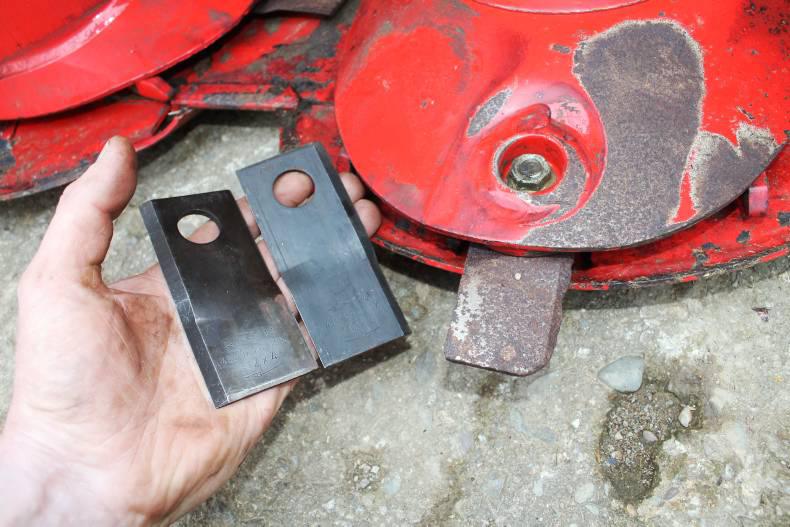
Picture five
One of the biggest reasons a mower fails at the start of a season is because the belts have not been tightened correctly and burn out or are perished and broken. Usually just two or three bolts hold the belt cover in place. Always check your belts before going to mow. If there are part numbers or a size written on the belt, write in on the outside of the machine in marker/tippex. It takes the guesswork out of replacing or sourcing belts if they fail.

Picture six
Most manufacturers provide some sort of guidance for tensioning belts. This is Pöttinger’s version – clear and easy to see, not tight enough and there is a spring exposed beyond the metal pointer.

Picture seven
The majority of plain disc mowers have a primary gearbox separated from the mower bed gearbox. There will be a dipstick or level plug where the oil level can be checked. Do check it for levels and oil quality. Anything other than golden clear and it needs to be changed. A low oil level could also indicate a leak that needs attention. Pöttinger recommends changing the oil in this gearbox after the first 50 hours and thereafter every 300ha at the latest.

Picture eight
Checking the mower bed oil can be a bit trickier. Pöttinger has a set height that the mower bed needs to be inclined at (250mm at the very end for the Novadisc 305). Then unscrew the filler/level plug close to the base of the first disc and the oil should be at the level of the plug hole. Other manufacturers such as Lely have individual gearboxes under each disc. Some other oil-filled beds have a simpler level plug which can be checked when the bed is in the upright position. Always refer to the operator’s manual. Pöttinger recommends changing the mower bed oil initially after 50 hours and then at a maximum of every 100ha thereafter.
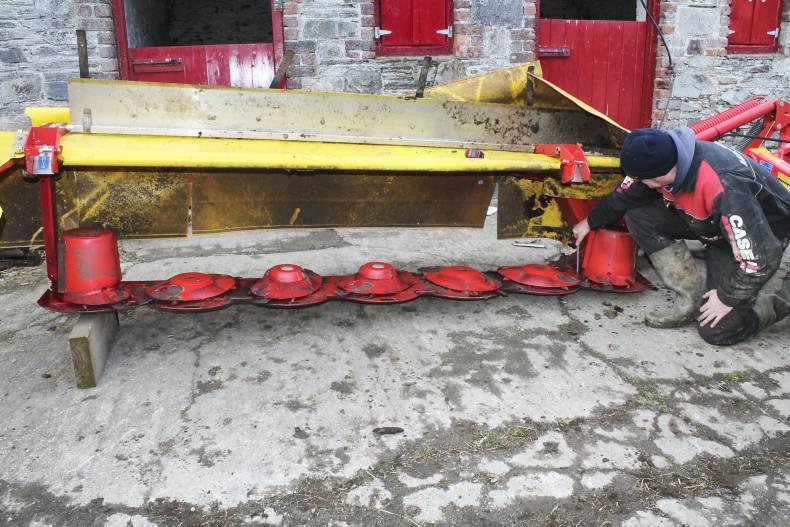
Picture nine
Greasing is an important part of mower maintenance. The headstock usually requires weekly greasing.
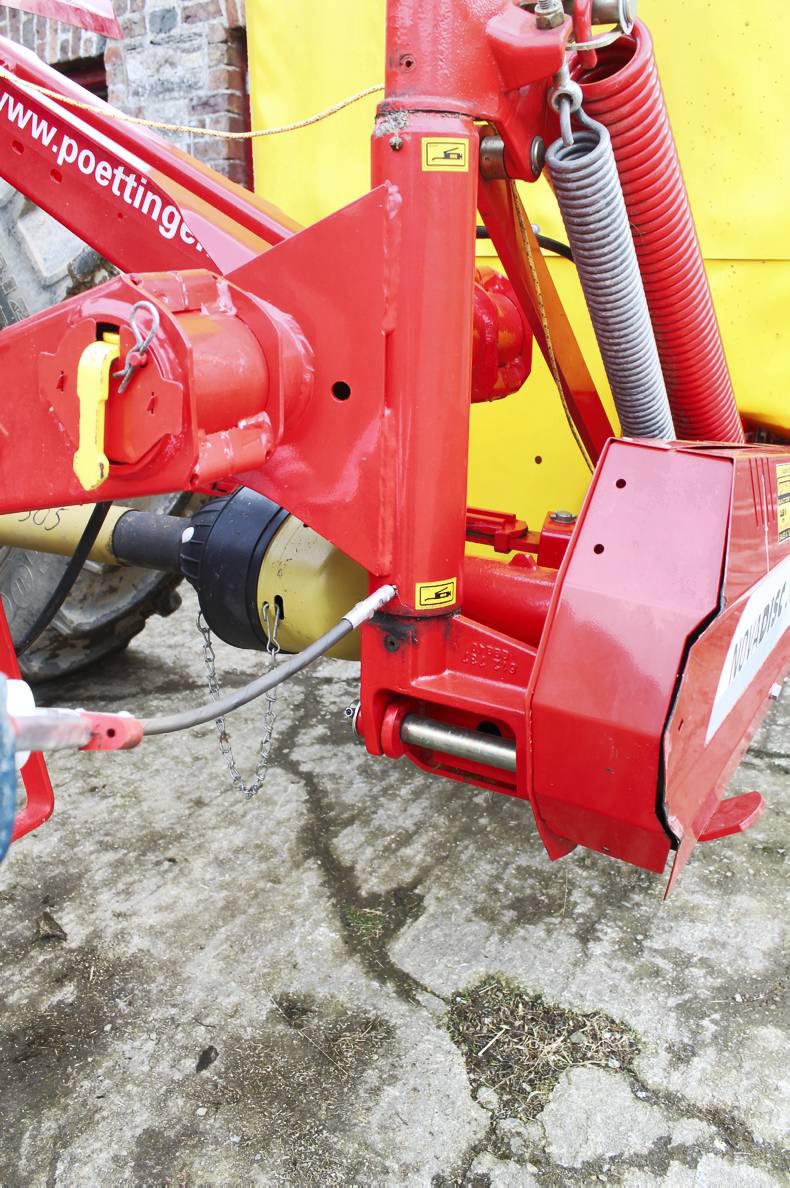
Picture 10
One of the most neglected grease points of any mower is where the mower bed is attached to the mower frame. On the Pöttinger, you have to lower the mower into the work position to access these grease nipples. Not greasing them will lead to the pivot bushings wearing out and potentially damaging the mounting brackets on castings on the gearbox.
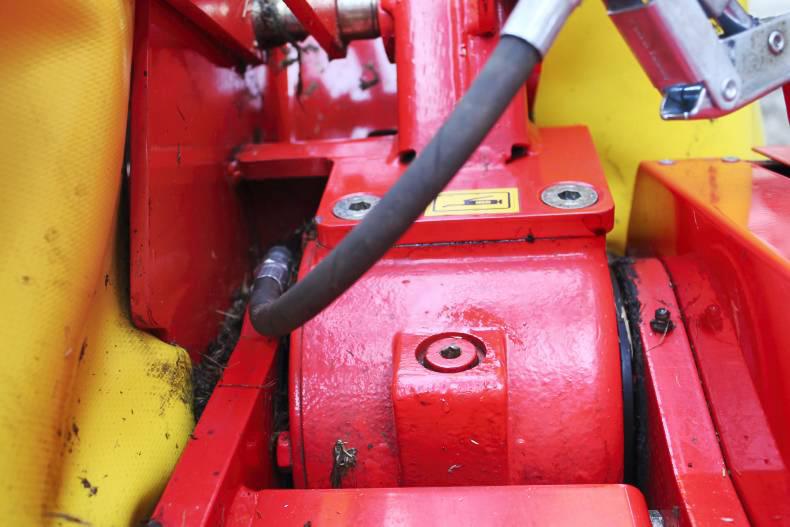
Picture 11
With the bed cover up, check each disc for rock or wear.
Also look out for oil leaks and loose top-hats if they are bolted on (both end discs on this mower are welded).

Picture 12
Skids protect the expensive mower bed from wearing on contact with the ground. Skids can and will wear. They need to be replaced if worn through, before any damage can be done to the mower bed.

Picture 13
The break-back device protects the mower bed from damage on impact with an obstacle. It relies on a set combination of spring pressure and friction to operate correctly. Refer to the owner’s manual with regard to maintenance or adjustment. Do not be tempted to lubricate the actual break-away device, even for winter storage.
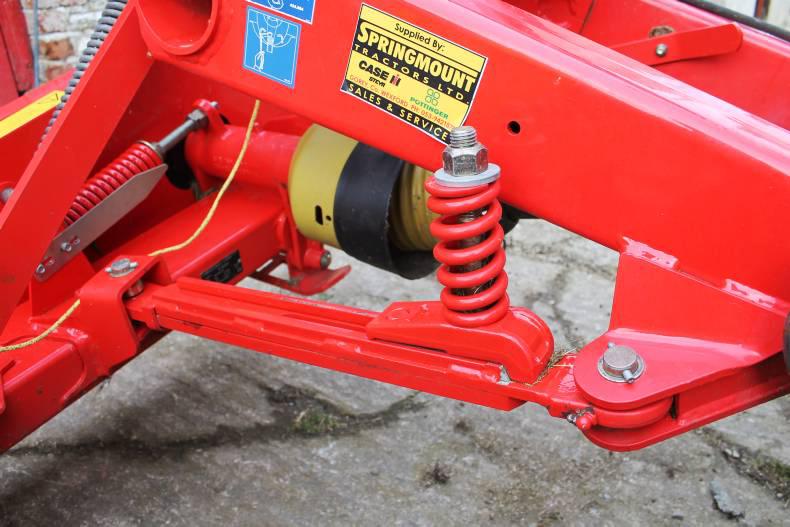
Picture 14
The mower cover performs an important role in containing dust and, to a certain degree, debris, as the mower goes about its business. It is the first line of defence if the mower launches an obstacle so is well worth maintaining and repairing, if damaged. Many use similar material to curtain-side trailers in the trucking industry. There are firms with the expertise to repair them.
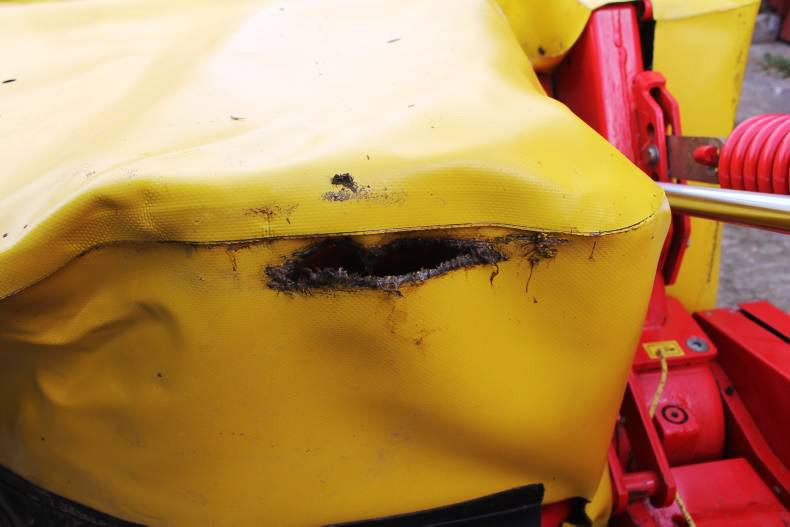
Picture 15
Typically raising and lowering a plain disc mower is a single acting hydraulic ram. Check the ram for leaks and the actual hydraulic pipe for damage. A burst hydraulic pipe can be very frustrating because you cannot fold up the mower. A small investment will replace a damaged pipe.
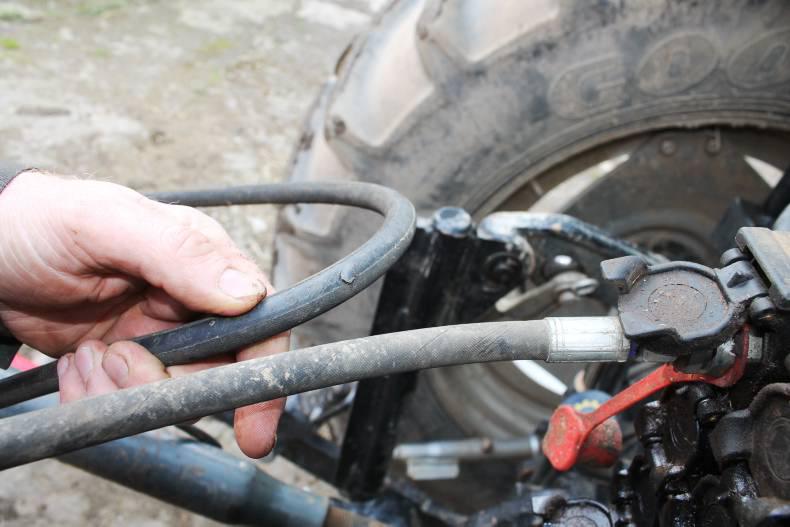

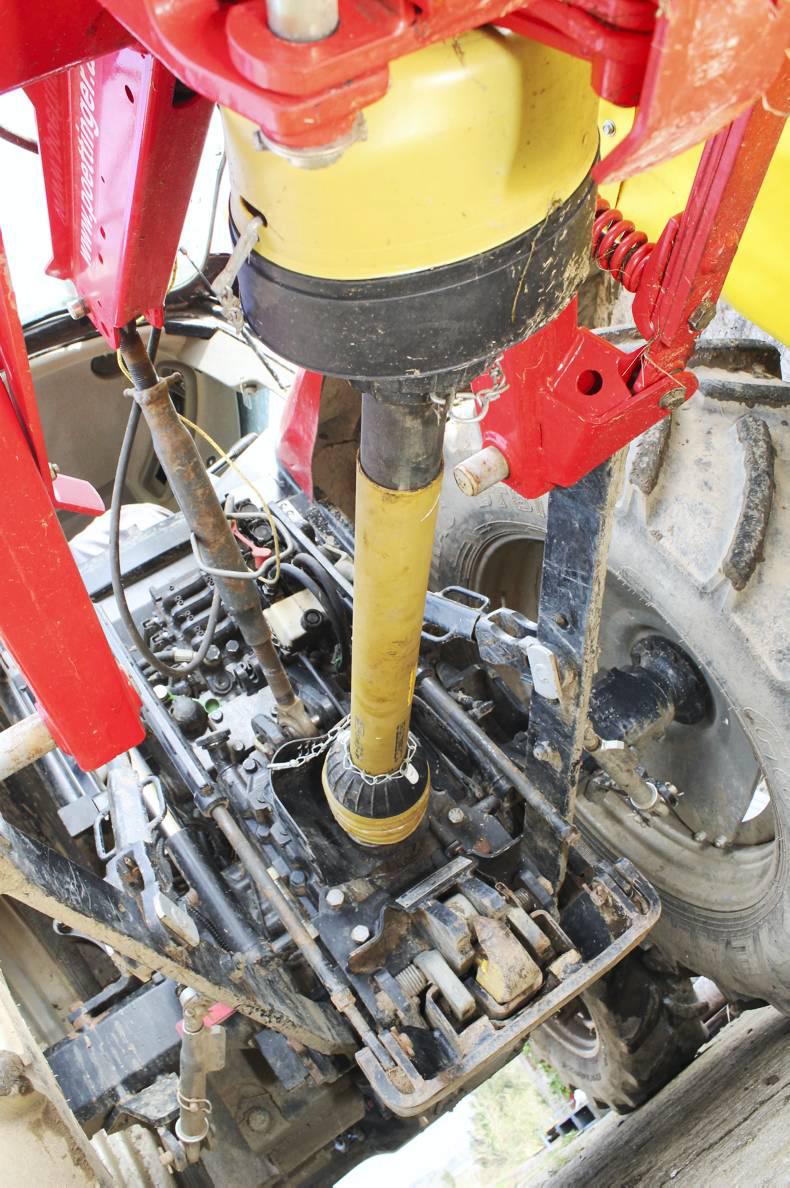




 This is a subscriber-only article
This is a subscriber-only article



















SHARING OPTIONS: